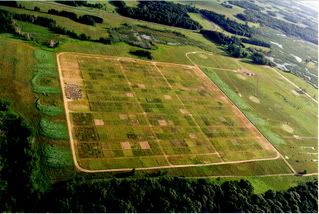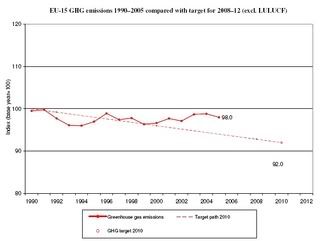Chinese group to build three ethanol plants in the Philippines
 Investments in the Philippines' biofuels industry are speeding up. The country has been identified by consultants as one of the countries in the South that both have the agro-ecological resources (land, climate, suitable crops) and the right the social, economic and policy frameworks as well as an excellent geographic location needed to become a highly successful biofuel production center that can supply East Asia (earlier post).
Investments in the Philippines' biofuels industry are speeding up. The country has been identified by consultants as one of the countries in the South that both have the agro-ecological resources (land, climate, suitable crops) and the right the social, economic and policy frameworks as well as an excellent geographic location needed to become a highly successful biofuel production center that can supply East Asia (earlier post).For this reason, a growing number of companies from Asia (especially China and Japan) and the US are establishing energy plantations and biofuel plants in the island state, often teaming up with local companies and farmers. The latest in the series is Nanning Yong Kai Industry Group Co Ltd, a Chinese agricultural firm that will spend a total of US$105 million to build three ethanol refineries in partnership with three Philippine companies, official documents from the agriculture department show.
The company will start work on the refineries this year, with the three facilities expected to be completed in 18 to 24 months, according to documents obtained by reporters from the Philippine Agriculture Department.
The three ethanol plants would be built at a cost of US$35 million each, making it medium scale plants with a capacity of 150,000 liters per day. Feedstocks will be cassava and sugarcane . The Chinese firm has signed agreements with two agricultural firms based in southern Negros Occidental province, namely BM SB Integrated Biofuels Co and Negros Southern Integrated Biofuels for the production of ethanol:
 biomass :: bioenergy :: biofuels :: energy :: sustainability :: ethanol :: sugarcane :: cassava :: Philippines ::
biomass :: bioenergy :: biofuels :: energy :: sustainability :: ethanol :: sugarcane :: cassava :: Philippines :: Nanning Yong Kai also signed a separate agreement with One Cagayan Resource Development Inc based in northen Cagayan Valley province. Under the deal, One Cagayan would provide the land and cultivate sugar cane or cassava which would be converted into ethanol at the new facility to be built by Nanning, which has a production capacity of not less than 150,000 liters per day.
There has been a rush to build ethanol facilities after the Philippines’ biofuels law took effect in May. The law requires a 1 per cent ethanol blend in diesel, while gasoline should have a 5 per cent blend within two years. The mandated ethanol blend will increase to 10 per cent after four year.
Amongst the most recent investors are Japan's Cosmo Oil (earlier post), Eastern Petroleum Corp. which teamed up with Guanxi Group of China for an ethanol project using cassava as feedstock while PNOC-Alternative Fuels Corp. is planning an ethanol plant project worth US$ 1.3 billion (on Chinese investments, see here, on PNOC's biofuel activities, here).
US firm E-Cane Fuel Corp. recently entered the sector by investing €111/US$150 million to put up a fully integrated ethanol processing facility in Central Luzon based on sugarcane (previous post).
And the latest in the series is the joint FE Global/Asia Clean Energy Services Fund L.P. and FEGACE Asia Sub-Fund L.P. investment in Biofuels Resources Inc. (BRI). The Funds will investwith BronzeOak Philippines Inc. in a series of four special purpose companies focused on ethanol production in the Philippines.
San Carlos Bioethanol Inc. is the first in this series of investments. The project will produce and sell 125,000 liters of ethanol daily, using sugar cane juice from local growers as a raw material. One of the most interesting aspects of the project relates to the project’s use of contracts with multiple sugar cane suppliers to secure a stable price for approximately 50% of the raw material needs of the plant.
Article continues
 --------------
--------------
 Mongabay, a leading resource for news and perspectives on environmental and conservation issues related to the tropics, has launched Tropical Conservation Science - a new, open access academic e-journal. It will cover a wide variety of scientific and social studies on tropical ecosystems, their biodiversity and the threats posed to them.
Mongabay, a leading resource for news and perspectives on environmental and conservation issues related to the tropics, has launched Tropical Conservation Science - a new, open access academic e-journal. It will cover a wide variety of scientific and social studies on tropical ecosystems, their biodiversity and the threats posed to them.


 Over the long to very long term, algae may offer an interesting potential for the production of biomass and biofuels. But much fundamental research is first needed to make algaeculture systems competitive and feasible, with some estimating that costs will have to come down 20 times before algae can compete with ordinary biofuels. Since algae research programs were discontinued in the early 1990s, no major biotech or engineering breakthroughs have been made in the sector, so we must assume that algal biomass yields remain the same as at that time, that is, between 30 and 50 tonnes per hectare - below the productivity of most tropical terrestrial crops (
Over the long to very long term, algae may offer an interesting potential for the production of biomass and biofuels. But much fundamental research is first needed to make algaeculture systems competitive and feasible, with some estimating that costs will have to come down 20 times before algae can compete with ordinary biofuels. Since algae research programs were discontinued in the early 1990s, no major biotech or engineering breakthroughs have been made in the sector, so we must assume that algal biomass yields remain the same as at that time, that is, between 30 and 50 tonnes per hectare - below the productivity of most tropical terrestrial crops ( An interesting technical
An interesting technical 







Friday, June 15, 2007
Mediterranean countries face dangerous increases in heat stress, if GHG emissions are not reduced
The analysis also shows a reduction in greenhouse gas emissions could reduce the intensification of dangerously hot days projected in the scenario by up to 50 percent. The research covered the entire Mediterranean area, which includes 21 countries in Europe, Africa and Asia. Major cities covered in the study include: Prague, Zurich, Bucharest, Athens, Istanbul, Tel Aviv, Cairo, Algiers and Casablanca.
The results of the study have been published in the June 15 issue of Geophysical Research Letters.
Impacts on health, energy, agriculture, water, economy
A 2003 heat wave led to 15,000 deaths in France and almost 3,000 in Italy. The researchers found that global warming causes summer temperatures to dramatically exceed the range that was correlated with the increased number of deaths.
The thresholds of the 2003 event are substantially exceeded in the future in both of the research scenarios that were created (image, click to enlarge), says Diffenbaugh, who is a member of Purdue's Climate Change Research Center. The research is about understanding the response to different emissions levels. It finds that decreases in greenhouse gas emissions greatly reduce the impact, but also sees negative effects even with reduced emissions. Technological and behavioral changes that are made now will have a big influence on what actually happens in the future.
In addition to the human health risks, extremely high temperatures could impact the economy of this region, which includes metropolitan areas such as Rome, Paris and Barcelona, says Jeremy Pal, co-researcher and associate professor of civil and environmental engineering at Loyola Marymount University:
When high temperature extremes increase, it could have significant negative impacts on human health, water resources, agriculture and energy demand.
In addition to Diffenbaugh and Pal, Filippo Giorgi of the International Centre for Theoretical Physics and Xuejie Gao of the National Climate Center in Beijing are co-authors of the paper. The researchers used a supercomputer in the National Climate Center in Beijing to run the climate model.
High resolution model
The model offers a resolution of 20 kilometers, about 12.5 miles, and is believed to have the highest spatial resolution available for the Mediterranean region. Much like increased resolution in a photo makes a clearer picture and allows one to zoom in without blurring the image, the powerful resolution of the climate model allows researchers to gather detailed information about particular areas.
Giorgi, who is head of the Earth System Physics Section of the International Centre for Theoretical Physics, said the Mediterranean is of interest because it is one of the most susceptible areas to climate changes - both climatically and socially.
"In the global warming scenario, there is more warming and drying in the Mediterranean than in other regions of the world, which makes the Mediterranean a climate change 'hotspot,'" Giorgi said. "The Mediterranean also is a very vulnerable region to climate change in terms of the impacts to the way of life of those who live there."
The researchers found that this warming and reduced precipitation contribute to a preferential warming of the hottest days of the year.
"We found that the hottest days of the year, or the 'hot tail,' warm more than the typical summer days warm," Diffenbaugh said. "One might expect that an average warming of four degrees would equate to each day warming by four degrees, but in fact the hottest days warm quite a bit more."
This is due, in large part, to a surface moisture feedback. The surface gets dryer as it gets hotter and the dry soil leads to less moisture in the area and less evaporative cooling. The locations of intensified warming on hottest days of the year matched the locations where surface drying occurred, Diffenbaugh said.
With the projected shift to more severe temperatures, the daily temperatures currently found in the hottest two weeks of the summer instead are found in the coldest two weeks of the summer in the future climate scenario, Diffenbaugh said.
Hot to become 'normal'
"The hottest temperatures we are used to experiencing will become the normal temperatures of the summer, and the hot periods will be magnified," Diffenbaugh said. "Take Paris: If we look at the temperatures that occurred there during the heat wave in 2003, when 15,000 people died, those temperatures are exceeded a couple dozen times every year in the future projection. That means that severe heat waves, such as those rare events that have occurred in the past couple of years, are likely to become far more common."
The study used the National Weather Service Heat Index in the analysis of the heat stress response to increasing greenhouse gas concentrations. The researchers found that areas most likely to face substantial increases in the dangerous heat index were concentrated largely in coastal areas.
"Coastal regions were more affected than inland regions, which is of particular importance because many large cities in the Mediterranean are on the coast," Giorgi said. "This is the first time this amplification signal over coastal areas could be seen and quantified. Coastal regions are particularly vulnerable because they will likely be affected by other important climate change related stresses, such as a rising sea level."
Diffenbaugh said without the high resolution of the climate model, the researchers would not have been able to identify the coastal effects.
"This underscores the importance of advancing our technology and examining a number of scenarios in great detail," he said. "If we want to quantify the risks associated with climate change, it is critical to understand the local and regional impacts as well as the global impacts."
For the study's standard future scenario, the research group used a commonly accepted emissions scenario from the Intergovernmental Panel on Climate Change that assumes greenhouse gas emissions continue to increase exponentially. The reduced emissions scenario incorporated a reduction in population growth and greater environmental concern, Diffenbaugh said.
The researchers are currently using the high-resolution model to further evaluate the effects that increased temperatures and surface drying could have on agriculture and energy and water resources.
Image: heat stress in the 21st century for two greenhouse gas emissions scenarios. The top panel shows the expected intensification of the severity of extreme hot days given accelerating increases in greenhouse gas concentrations. The bottom panel shows the expected decrease in intensification associated with decelerated increases in greenhouse gas concentrations. Credit: Purdue University image/Diffenbaugh Laboratory.
More information:
Noah S. Diffenbaugh, Jeremy S. Pal, Filippo Giorgi, Xuejie Gao, "Heat stress intensification in the Mediterranean climate change hotspot" [*abstract], Geophysical Research Letters, Vol. 34, L11706, doi:10.1029/2007GL030000, published June 15, 2007.
Purdue University: Reduced greenhouse gas emissions required to avoid dangerous increases in heat stress, researchers say - June 14, 2007.
Article continues
posted by Biopact team at 5:24 PM 0 comments links to this post
